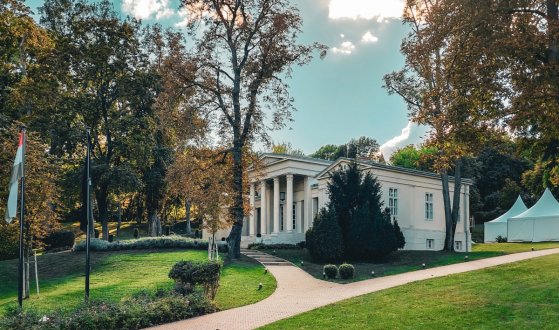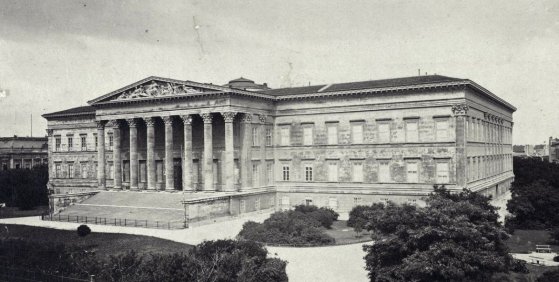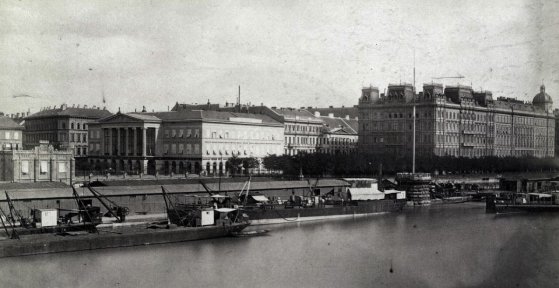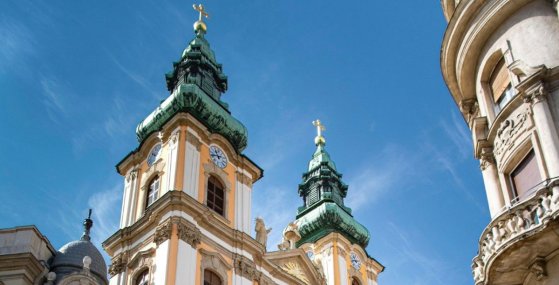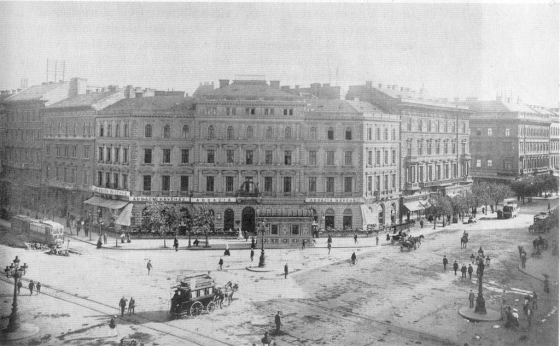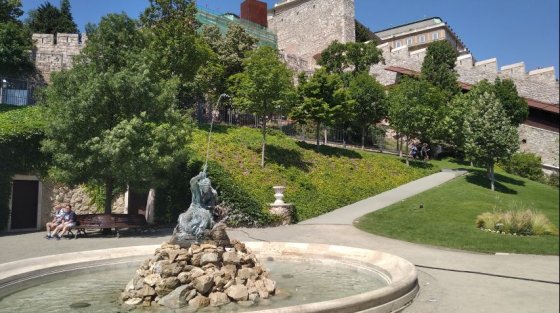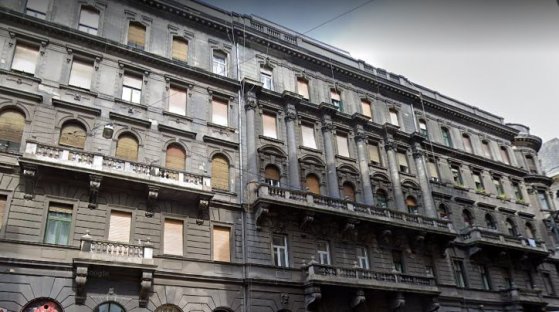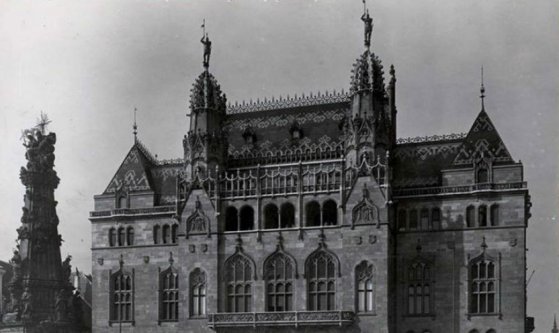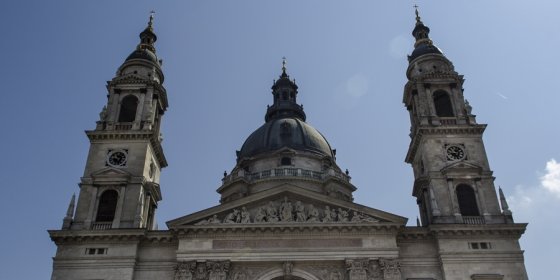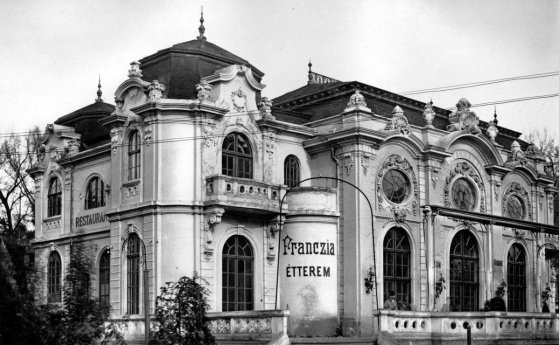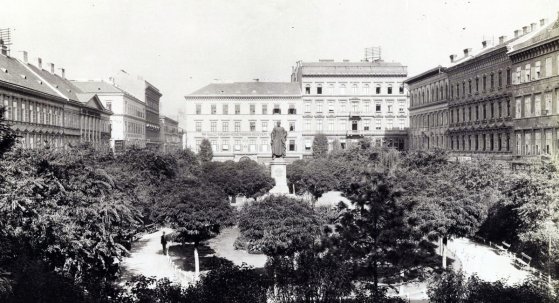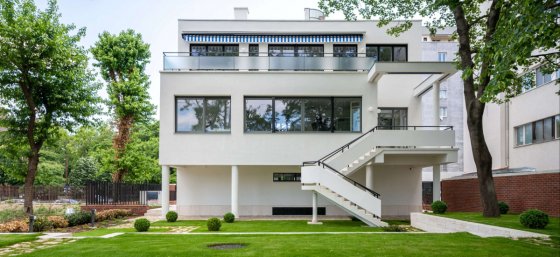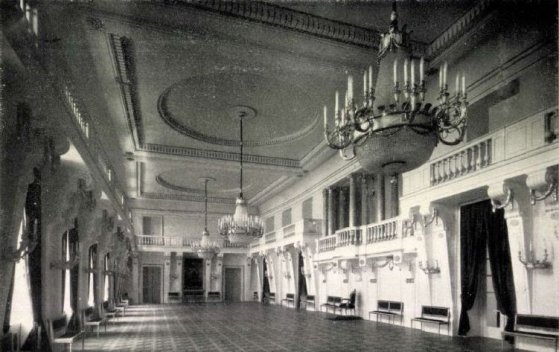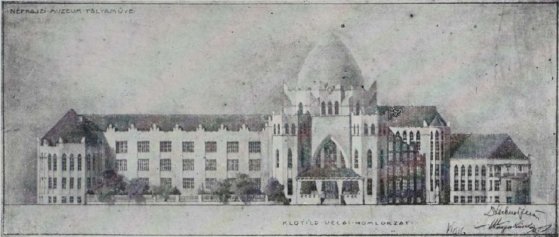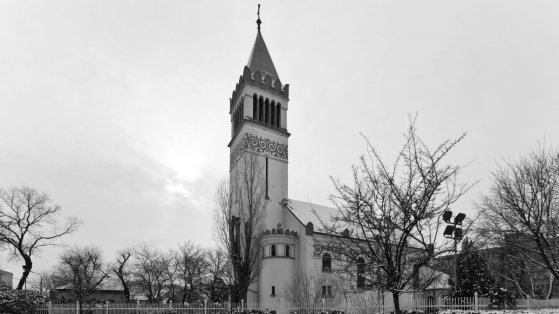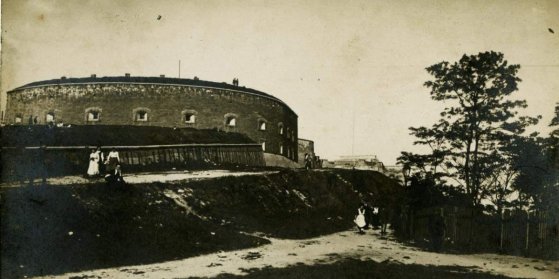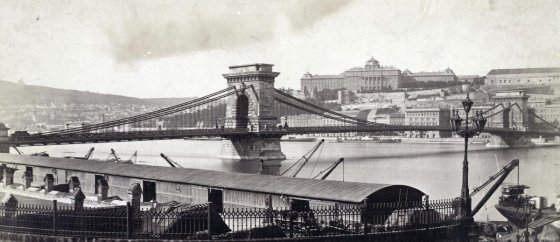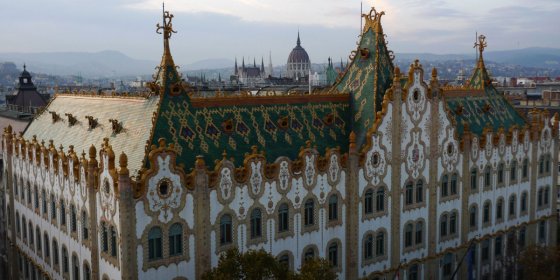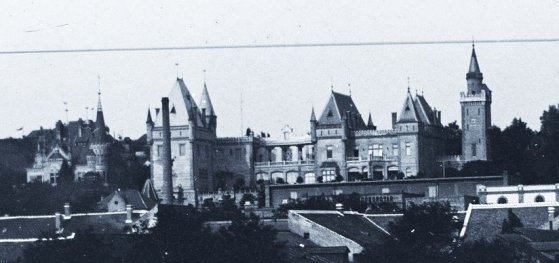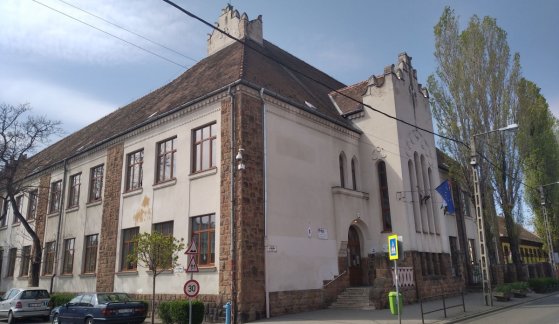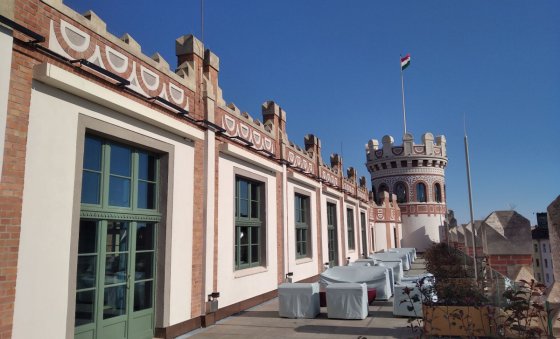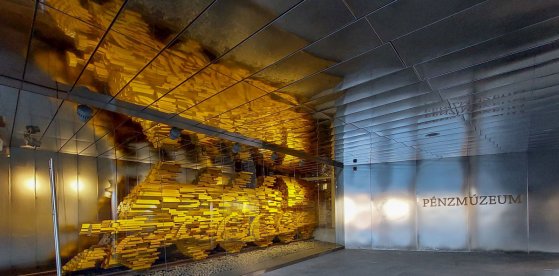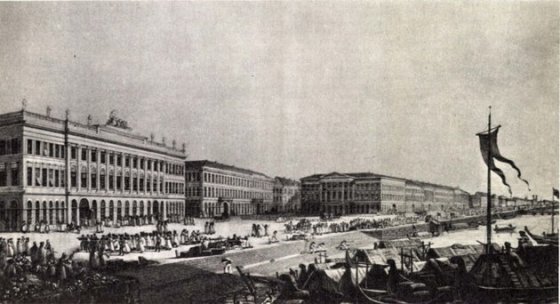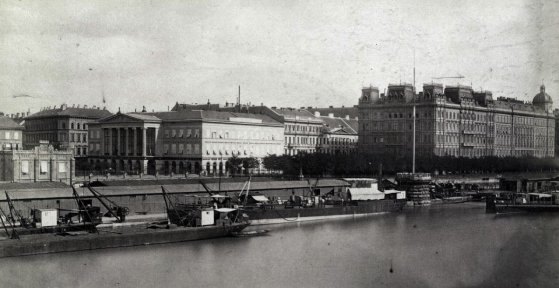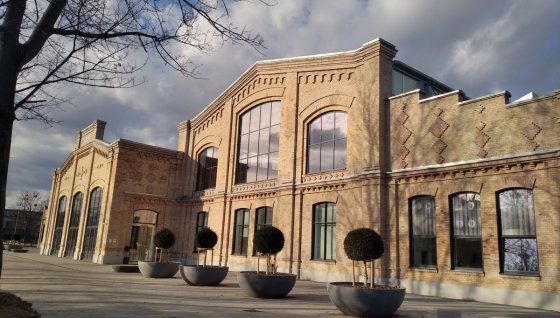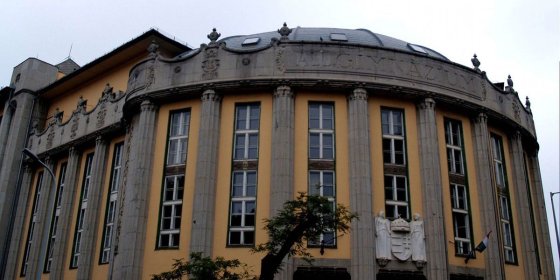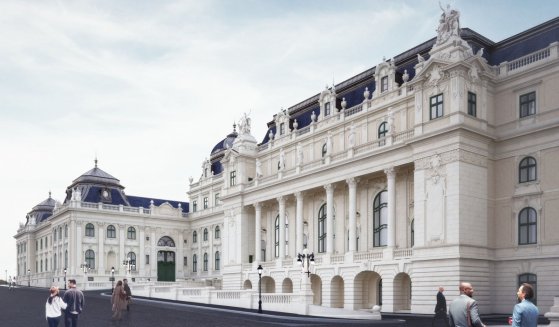 The „intertwined history” of the bridges and the city of Budapest
Which ideas and events have shaped the fate of bridges of Budapest and the cityscape? Alongside many other interesting facts, this question is also answered this newly published book by the Budapest City Archives, which introduces the history of bridges in Budapest.
The „intertwined history” of the bridges and the city of Budapest
Which ideas and events have shaped the fate of bridges of Budapest and the cityscape? Alongside many other interesting facts, this question is also answered this newly published book by the Budapest City Archives, which introduces the history of bridges in Budapest.
Péter Bodó
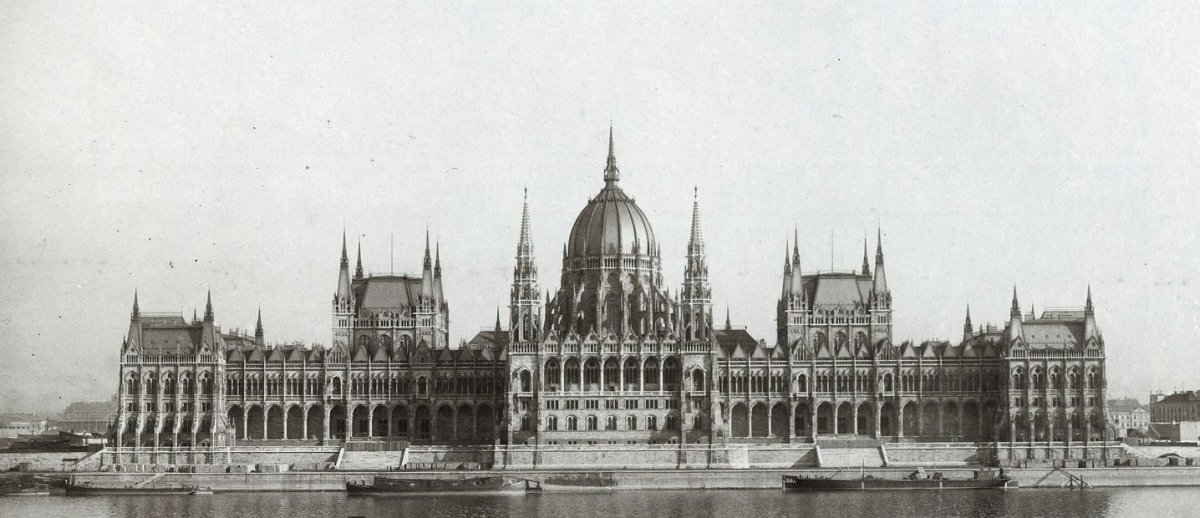 Imre Steindl, who died 120 years ago, could not see the handover of the Parliament
Imre Steindl, who died 120 years ago, could not see the handover of the Parliament
September 19, 2022 at 12:30 PM
Imre Steindl's name has merged with his main work, the Budapest Parliament. Thanks to one of the largest parliament buildings in the world, the master is included in the universal history of art, which can only be said of a few Hungarian architects. However, he had to work a lot to get to this point, fortunately, the main stages of his work can still be seen today, and they largely adorn the capital. Below, Pestbuda presents his lesser-known buildings in Budapest, thus remembering the architect on the 120th anniversary of his death.
The first gems of the Hegyvidék - József Hild's villas in Buda
September 11, 2022 at 10:30 AM
More and more people moved from Pest, which began to grow in the first half of the 19th century, to the mountains of Buda, because instead of traffic and crowding, calmness and fresh air awaited them there. The larger plots also made it possible to build free-standing villas with gardens, many of which were designed by the most employed architect of the period, József Hild.
Interior transformation of the National Museum - The building was also expanded with a hidden floor
July 29, 2022 at 9:00 AM
The Hungarian National Museum is one of the iconic buildings of our country, so since it was handed over in 1847, attention has been paid to its condition. By the beginning of the 20th century, however, its collection had already grown to such an extent that excessive crowding made its operation impossible. Some of the preserved material was transported to other buildings, and then in 1926, its large-scale restoration began, during which a hidden, third floor was also created in 1927 - ninety-five years ago.
Plans for a metropolis - the beginnings of Budapest's urban planning
July 25, 2022 at 10:00 AM
Budapest's golden age coincided with the country's economic boom: after the Compromise of 1867, the city, located on both banks of the Danube, began to develop rapidly. In 1870, in order to regulate growth, the Parliament established the Budapest Public Works Council, whose first tasks included the procurement of a general city plan. Based on this, in 1872 - one hundred and fifty years ago - Pest's first comprehensive regulatory plan was drawn up.
Art inside the centuries-old walls - the little-known side of the University Church
July 17, 2022 at 9:00 AM
The walls of the University Church have been standing tall in the inner city of Pest for 280 years: the construction of one of the jewels of Hungarian Baroque architecture was finished in 1742, after nearly twenty years. However, this did not mean its completion, as the interior was still completely unadorned at that time. It got its worthy face surprisingly late, only in the middle of the 19th century, which was supplemented with additional details at the beginning of the 20th century- so the church we know today was formed then.
The birth of an iconic place - Oktogon is 150 years old, which was called Nyolcszög Square for decades
July 10, 2022 at 12:30 PM
We can safely call Oktogon Budapest's most unique transport hub: with its regular octagon shape, it quickly stands out on the map, and its easy-to-remember name means refreshment for foreigners, especially in Hungarian conditions. In addition, public transport routes famous throughout Europe intersect here: the continent's first underground railway, as well as the busiest tram lines. Its birth also coincides with the beginning of the golden age of the capital: its current form was defined 150 years ago, and for a long time it was called Nyolcszög Square.
Surroundings of Buda Castle - The historic gardens are being renewed
July 9, 2022 at 9:00 AM
The National Hauszmann Program covers not only the reconstruction of the buildings of the Buda Palace District, but also the renovation of the gardens surrounding them. The royal environment at the turn of the century naturally also demanded eye-catching green surfaces, on which an army of gardeners worked. This wonderful environment survived the siege relatively unscathed, but the rebuilding after World War II did not spare it, so in fact these gardens can also be considered huge losers of deliberate destruction.
Collapsed architectural values - The Jókai Street residential building
June 29, 2022 at 9:00 AM
The collapsed roof structure of the residential building on the corner of Jókai and Aradi Streets injured several people, and the parked cars also suffered considerable material damage, as bricks, pieces of plaster and other construction materials fell from a height of nearly twenty metres. The unfortunate accident drew attention to the building itself, which is a sophisticated work of the late 19th century.
French, Italian, German, Hungarian - The Royal Hungarian Ministry of Finance and its European counterparts
June 28, 2022 at 9:00 AM
Hungarian folk art played a major role in the magical interiors of the Szentháromság Square palace of the Hungarian Royal Ministry of Finance. Because at the time of its construction - at the very beginning of the 20th century - the national sentiment was on fire in our country, which was expressed in the language of architecture by reviving the people's ancient decorative motifs. A Ministry of Finance is an important institution in every country, but is the spirit of the given nation reflected on the walls elsewhere? By presenting some European examples, we are looking for the answer to whether this type of building was built based on this concept elsewhere.
The dome of St. Stephen's Basilica went up in flames 75 years ago
June 23, 2022 at 11:30 AM
The construction of the largest church in Budapest took a very long time in accordance with its size, it filled the second half of the 19th century and even extended a little into the 20th century. It was finished in 1905, but forty years later a scaffolding was put up again: the damage caused by World War II had to be repaired. However, the renovation caused even more trouble, with an accidental fire burning the entire dome.
Abundance of towers and reliefs - This is what the well-known tenement house on Károly Boulevard looked like
June 16, 2022 at 1:00 PM
In the huge tenement house in the centre of Pest, at the intersection of Károly Boulevard and Dohány Street, renovation works will soon begin: it will get its characteristic towers that were demolished after World War II. It is a building that is especially important from the cityscape point of view, and in addition to the interesting roof elements, there are also large reliefs on it. The huge facade of the house is a very high-quality work from the beginning of the 20th century.
Kolegerszky, Wampetics, Gundel - The world of Városliget's restaurants
June 12, 2022 at 10:00 AM
For more than two hundred years, Városliget has been a popular excursion destination for people from Pest, where the gates of some restaurants have always been open to people who are tired of walking and boating. The golden age of the Liget fell by the time of the millennium: the millennium exhibition of 1896 was attended by nearly six million visitors, and accordingly catering services switched to a higher level.
The end of the Salt Office in Pest - This is how József Nádor Square was born
June 7, 2022 at 11:00 AM
The Danube is still an important trade route to this day, but in the first half of the 19th century the navigable waterway was even more important. Among other things, salt was transported on it, for the storage of which and the administration of the related taxes, a Salt Office was erected on the banks of the Danube in Pest. South of it, in the building of the Thirtieth Office, customs duties for commercial goods could be handled. However, the development of the city forced their demolition, and the József Nádor Square was established in its place.
The world of modern architecture is revealed - PestBuda visited the Walter Rózsi Villa
May 31, 2022 at 9:00 AM
The new exhibition building of the Hungarian Museum of Architecture and Monument Protection Documentation Centre is in fact an exhibition object in itself. The institution has not had its own exhibition space for more than half a century, but now it has got a truly authentic one: a modern villa where visitors can not only get information about this style from wall texts and pictures, but also perceive its features in the space.
The Hidden Treasure of Országház Street - A ceremonial hall with an adventurous story
May 29, 2022 at 9:00 AM
Walking in the Buda Castle, between the one- and two-storey houses of the narrow Országház Street, we would not even think that one of them hides a huge ceremonial hall. Although it is actually logical, as the name of the street already suggests that the greatest lords of the country once appeared here, and a representative hall was built for them. The life of the adventurous room took a turning point at the end of May 1929, as it was restored to its old glory after decades of neglect.
It could have been like that - A hundred-year-old plan for the Museum of Ethnography
May 24, 2022 at 9:00 AM
The new building of the Museum of Ethnography in the Városliget was ceremoniously handed over on Sunday. It is the first headquarters of the institution that was built for museum purposes during its hundred and fifty years of existence, although plans have been made for it earlier. Nearly a hundred years ago, in 1923, a tender was held for which various plans were submitted.
The Lutheran church in Kispest is 95 years old
May 22, 2022 at 9:00 AM
The name of the Templom (Church) Square in Kispest is eloquent, as three denominations also built their churches in this beautiful place: the Catholic, the Reformed and the Lutheran. The latter is the newest, although it is no longer young, since it was inaugurated on 22 May 1927, just ninety-five years ago. The special shape of its tower faithfully reflects the approach of the age of its construction, and its interior reflects Lutheran traditions.
Fortress over the city - The true history of the Citadel and common misconceptions
May 14, 2022 at 11:00 AM
A foreign tourist may not even believe that Gellért Hill was not created by human hands. Towering in the middle of the city, it offers stunning views, so the idea that it was built for tourism may be obvious. Yet it is a gift of nature, and the view could be used not only for pleasure but also for military purposes. This justified the construction of a fortress on the hilltop called the Citadel. The building will be completely reborn thanks to the Várkapitányság, we now have the opportunity to see the work in progress.
Colourful memento about a brilliant architect - The Postal Palace became the main work of Gyula Sándy
May 8, 2022 at 12:00 PM
Finding and viewing pieces of the architectural heritage of a city with a long history is an eternal tourist hit. Budapest stands out in this area mostly with the legacy of dualism and the two world wars: almost everyone have encountered the names of Miklós Ybl, Imre Steindl or Ödön Lechner, but if we dig deeper, it is impossible to list how many undeservedly lesser-known talents contributed to the decoration of the Hungarian capital. The building of the Buda Postal Palace, which adorns the south-western side of Széll Kálmán Square, is also connected to such a genius: a remarkable volume came out this year about Gyula Sándy's life and work, both from a professional and a layman's point of view.
Before the big changes - Budapest at the time of the compromise
May 2, 2022 at 11:00 AM
The Austro-Hungarian Compromise, established in 1867, ushered in one of Hungary's heyday. Under the Compromise of 155 years ago, a dual system was created - hence our common word dualism, which is used to characterise the period up to 1918. This upswing has brought about great changes: as a result of industrialisation, more and more people have moved to the cities, and the population of Budapest has grown exponentially. But what was the capital like in the second half of the 1860s?
Bees on the roof - The inner hall of the Postal Savings Bank is being renovated
April 25, 2022 at 9:00 AM
In the vicinity of Szabadság Square, the Postatakarékpénztár [Postal Savings Bank], which was built at the turn of the century, has been being renovated for months. In addition to Ödön Lechner's main work, three other works by the master are also being restored: the Museum of Applied Arts, the Balás Sipeki Villa next to the Városliget and the Drechsler Palace on Andrássy Avenue. While the latter are undergoing a larger-scale change visible from the outside, in the case of the Postal Savings Bank, its internal box office will get back its original dome. Once upon a time, this was also characterized by an imaginative ornamentation similar to the façade, but it was remodelled over time according to the needs of its use, but it was not spared by the storms of history.
A world-famous Hungarian brand - The Törley Champagne Factory is 140 years old
April 22, 2022 at 9:00 AM
To this day, Törley champagne is one of the most famous Hungarian products, an almost obligatory element of the celebrations in Hungary, and the brand is also present in many foreign countries. Like almost everything, the roots of this factory date back to the second half of the 19th century, the period of dualism: József Törley founded his plant in Budafok in 1882, exactly one hundred and forty years ago. However, not only the drink made there is of a very high standard, but also the family's buildings in Budapest.
Hungarian spirit - The Renaissance inspired Pesterzsébet's special school building
April 12, 2022 at 9:00 AM
The characteristic building of the Lázár Vilmos Elementary School in Pesterzsébet easily attracts attention. Although it is quite out of the capital's flow due to its location, it is closely connected to the high architectural culture of Budapest due to its designer: this is also the work of Jenő Lechner, the designer of the Vienna Gate in Buda Castle and the Jókai Tomb, who finalised the plans on 11 April 1916, exactly 106 years ago.
Stunning interiors - PestBuda visited the renovated Postal Palace
March 20, 2022 at 9:00 AM
The best-known building of Széll Kálmán Square is the former Buda Postal Palace, which has been dignified over the area since its handover in 1926. Hungarian Post (Magyar Posta) moved out of it in 2008, so it was empty for many years, it only found a customer in 2016. It was transferred to the Hungarian National Bank in 2018, and thanks to the reconstruction that began at that time, the building was reborn as the HNB Supervisory Centre and Money Museum. Huge changes have taken place, but they have been carried out with careful attention, and the interiors have been renewed in a way that also reflects the original states. PestBuda toured the renovated building.
Gold Bars in the deep - The Money Museum opens in the Buda Palace on 15 March
March 11, 2022 at 2:30 PM
One of the most famous buildings of Széll Kálmán Square, the former Buda Postal Palace, has undergone huge changes in recent years. It was purchased by the Hungarian National Bank and began its renovation in 2018. Its exterior has been restored to its golden age, while its interiors have been modernised to accommodate its new functions: most of it has been occupied by the bank's supervisory centre, and the Money Museum was installed in the north wing, which will open on 15 March. However, it was already shown to the press, where Pestbuda could also report from.
An impressively rich oeuvre of an architect - József Hild died 155 years ago
March 7, 2022 at 10:00 AM
One of the most famous figures of Hungary in the 16th century was József Hild. He fully deserved his reputation, as the cityscape of Pest, which was booming, was largely determined by his work. However, the unbroken development also caused the destruction of most of his works: many of his inner city buildings were demolished to give way to newer and bigger ones. Fortunately, some of his buildings still stand today and promote the talent of their designer.
Rising houses - How did Budapest's development into a world city begin?
March 1, 2022 at 9:00 AM
As a result of the Compromise of 1867, dizzying economic development began in Hungary. This was particularly striking in the capital, which in a few decades has evolved from a medium-sized settlement to one of the largest cities in Europe. People flocked to Budapest from the countryside, and more and more houses were built to give the new townspeople a place to live.
Wonder in Kőbánya - We went to the Eiffel Art Studios
February 19, 2022 at 9:00 AM
The Eiffel Art Studios of the Hungarian State Opera is one of the new attractions of the 10th District and of the whole of Budapest. From the former Északi Járműjavító [Northern Locomotiv Workshop] of MÁV, it has become a cultural centre offering colourful programs, while also helping the operation of the Opera. Not only is the Art Studios [Műhelyház in Hungarian, meaning Workshop] interesting because of its complex function, but the recently completed renovation of the hall, originally built in 1886, has also been a great success.
The Swan Song - Ödön Lechner's last building
February 17, 2022 at 10:00 AM
In recent days, the Szent László Grammar School in Kőbánya has appeared frequently in the media. Although it was only visible as the background of the events, the viewers may have noticed the special facade of the building and its unique decorative elements - this is explained by the fact that it was the last work of Ödön Lechner (the genius who created the Hungarian architectural form), and it was finished in the year of the master's death, in 1914.
A forgotten ramp - Another part of Buda Castle is being rebuilt
February 11, 2022 at 10:30 AM
Buda Castle was not only a beautiful architectural work inside and out until the middle of the 20th century, but also a venue for dazzling events, where guests arrived in carriages and later in elegant cars. After 1905, the main entrance opened from Szent György Square, in a newly built wing building with a ramp on the other side. This building, which bridges the level difference, will also be part of the future reconstruction of the palace.
More articles
 The „intertwined history” of the bridges and the city of Budapest
Which ideas and events have shaped the fate of bridges of Budapest and the cityscape? Alongside many other interesting facts, this question is also answered this newly published book by the Budapest City Archives, which introduces the history of bridges in Budapest.
The „intertwined history” of the bridges and the city of Budapest
Which ideas and events have shaped the fate of bridges of Budapest and the cityscape? Alongside many other interesting facts, this question is also answered this newly published book by the Budapest City Archives, which introduces the history of bridges in Budapest.
 The Bridge Report, which brought a turning point in the history of Budapest
A travel report that changed the history of Pest and Buda, as well as Hungary. The little book contributed to the change of half a thousand years of legal customs and the implementation of an investment of unprecedented size and technical quality. This book was The Bridge Report [Hídjelentés in Hungarian].
The Bridge Report, which brought a turning point in the history of Budapest
A travel report that changed the history of Pest and Buda, as well as Hungary. The little book contributed to the change of half a thousand years of legal customs and the implementation of an investment of unprecedented size and technical quality. This book was The Bridge Report [Hídjelentés in Hungarian].
 Drama on the university wall - The heroic monument was planned 95 years ago
In the constant hustle and bustle of the Egyetem Square in Pest, the students may not even notice the monument that decorates the short section of wall between the church and the central building of ELTE. However, it commemorates their predecessors, the heroes who fought for their country in World War I, and those who heroically helped them. The first design of the dramatically collapsing soldier was born in 1928, ninety-five years ago.
Drama on the university wall - The heroic monument was planned 95 years ago
In the constant hustle and bustle of the Egyetem Square in Pest, the students may not even notice the monument that decorates the short section of wall between the church and the central building of ELTE. However, it commemorates their predecessors, the heroes who fought for their country in World War I, and those who heroically helped them. The first design of the dramatically collapsing soldier was born in 1928, ninety-five years ago.

